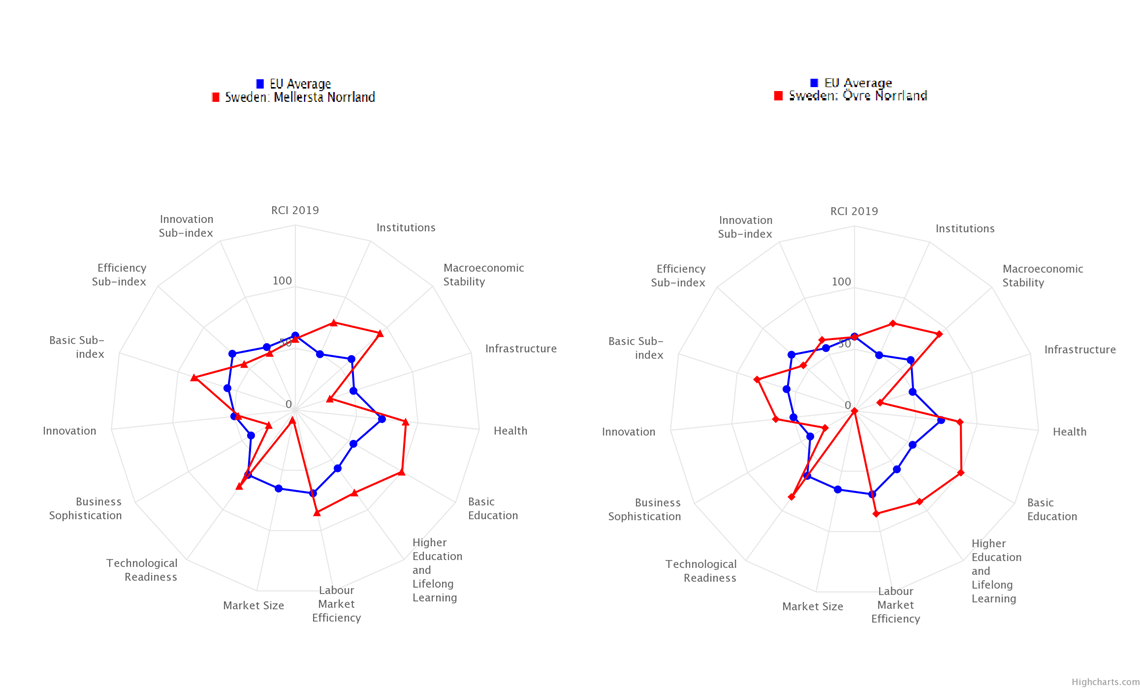Deficiencies in infrastructure lower Northern Sweden's competitiveness

On October 7, the European Commission published its Regional Competitive Index. The index that categorizes the competitiveness of regions shows that Northern Sweden is behind other comparable regions in Europe when it comes to infrastructure, among other things, and that this reduces competitiveness compared to other regions.
Regional Competetive Index 2019 (RCI) is the fourth edition of the European Commission's regional competition index. The index captures long-term development and production opportunities based on eleven different dimensions of competitiveness for EU regions at NUTS2 level, a geographical division where Norrbotten and Västerbotten form the joint NUTS2 area "Upper Norrland" and Jämtland Härjedalen and Västernorrland constitute NUTS2 .
By not only focusing on the Gross Domestic Product (GDP) when measuring competition, but also covering social and structural aspects, an attempt is made to capture a more multifaceted picture of the concept of competitiveness. Although GDP is strongly linked to competitiveness, it is not the only factor. The index shows that there is a great difference between the EU's regions, especially in the more developed regions. Strong GDP does not automatically lead to great competitiveness, where factors such as macroeconomic stability, infrastructure and innovation can increase or decrease the region's competitiveness.
RCI shows that both Upper Norrland and Central Norrland lack three of the eleven dimensions when comparing the regions with other European regions with similar economic conditions. On the points of infrastructure, the size of the region's market share and "business sophistication", measured by, among other things, the proportion of employees in the finance and services sector and how small and medium-sized companies cooperate in the regions, Northern Sweden performs worse than other comparable regions.
RCI can see that both Upper Norrland and Central Norrland do not reach the same competitiveness as other comparable regions. Deficiencies in infrastructure are one of the reasons for this, which is thus a bottleneck for the continued development of the regions. The index indicates that further infrastructure investments are needed if the regions reach their full potential and this is in line with, for example, the 2017 OECD study that the regions in Northern Sparsely Populated Areas, NSPA, in northern Sweden, Finland and Norway have made and the conclusions in it the Arctic consultation report in the EU from 2018, where investment in transport infrastructure is highlighted as one of the most important to invest from national level and also the EU to strengthen the development power in Northern Europe.
The index is topped by Stockholm, followed by Utrecht and London, which are the most competitive regions. Upper Norrland is ranked 135 out of 268 while Central Norrland is ranked 142. The index and data for all regions can be found here.
If you are interested in how the index is developed, you can read more about the methodology around the index, click here
